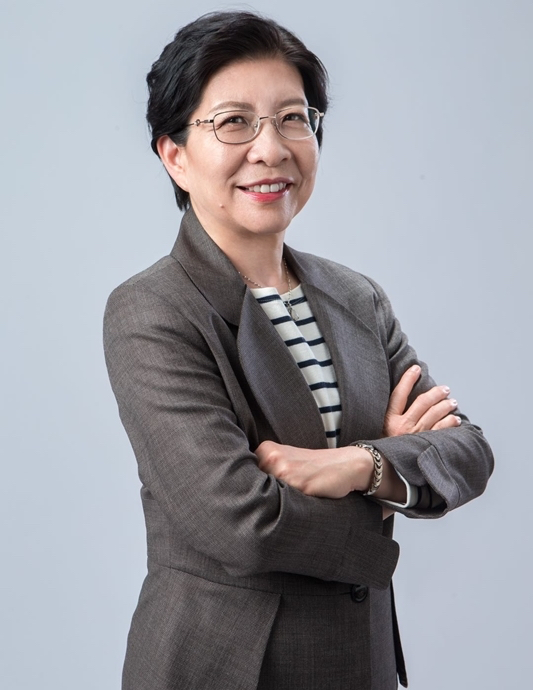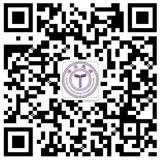
Phone: 86-10-62794825
Email: wuli@mail.tsinghua.edu.cn

2010-至今:清华大学教授
2001-2009:澳大利亚墨尔本 霍尔医学研究所,资深研究员,研究室主任
2001-2005:北京大学医学部,长江学者 讲座教授
1996-2000:澳大利亚墨尔本 霍尔医学研究所,研究员
1991-1995:澳大利亚墨尔本 霍尔医学研究所(Walter and Eliza Hall Institute), 博士后
1987-1991:澳大利亚墨尔本大学 医学生物学系,博士
1983-1985:北京医科大学,免疫学硕士
1978-1982:北京医科大学基础医学系,医学学士
学术荣誉与奖励
1997 纽约癌症研究所肿瘤免疫临床研究员奖 Cancer Research Institute (New York)
Clinical Investigator Award for Cancer Immunology
1996 伯奈特奖 Burnet Prize for Outstanding Young Scientists
2000 国家自然科学基金杰出青年基金B类(海外合作基金)
2000 教育部“长江学者”讲座教授
2009 国家高层次人才引进项目特聘专家
实验室成员:
刘鑫 2014级
张艺君 2014级
朱昕怡 2014级
苏子砚 2016级
史真 2017级
王超 2017级
罗茂财 2017级
王源浩 2020级
刘家琛 2020级
主要研究方向
我们每个人都依赖机体的免疫系统来抵御外来有害物,包括细菌、病毒及其它致病原的侵袭。免疫系统的细胞由人体的造血干细胞逐步发育成成熟为具有不同功能的免疫细胞。免疫细胞一旦发育成熟便具有监测外来致病物质入侵的能力,外来致病原可激活免疫细胞的功能从而诱导具有针对致病物质的高度特异性的免疫反应。外来致病原的入侵 还可导致多种类型免疫细胞的活化及相互作用,其结果可导致针对该致病原的不同类型的免疫应答。
我们的研究旨在探索免疫系统中最重要并最具吸引力的一类细胞——树突状细胞的发育及功能。我们先前的研究工作已证实树突状细胞是由造血干细胞发育而来。它们具有很强的调节免疫应答的能力——既可以诱导及增强针对不同致病原的特异性免疫反应,又可抑制免疫应答诱导免疫耐受。我们的研究还证明根据细胞表面表达分 子的不同, 树突状细胞可被分为不同亚群,不同亚群的树突状细胞在不同组织器官中(如淋巴组织和黏膜组织)可行使不同的功能。因此了解如何控制树突状细胞的发育及功能 就能进而实现对免疫反应的调控。对树突状细胞功能失调在许多免疫相关疾病的发病机理的进一步了解将为建立对这些疾病的有效治疗方法提供关键的理论基础。我 们将运用细胞及分子免疫学方法探索免疫细胞发育与功能的调节及其在免疫相关疾病发病中的作用机理。主要研究内容包括:
1. 造血前体细胞向固有免疫细胞定向分化的分子调节
2. 黏膜组织中树突状细胞、巨噬细胞等固有免疫细胞发育与功能的分子调节
3. 固有免疫细胞和炎症在抗肿瘤免疫反应中的调控作用
ORCID: 0000-0002-2802-1220
代表性论文:
1. He ZM, Zhu XY, Shi Z., Wu T. and Wu L. Metabolic Regulation of Dendritic Cell Differentiation. Front. Immunol. 10:410. doi: 10.3389/fimmu. 2019.00410.
2. Guo XH, Wu N, Shang YL,Liu X, Wu T, Zhou YF, Liu X, Huang JY, Liao XB and Wu L. The novel Toll-like receptor 2 agonist sUP3 enhances antigen Presentation and T cell activation by Dendritic cells. Front. Immunol. 8:158. doi: 10.3389/fimmu. 2017.00158.
3. Zhou, H., Xiao, J., Wu, N., Liu, C., Xu, J., Liu, F., & Wu, L. MicroRNA-223 Regulates the Differentiation and Function of Intestinal Dendritic Cells and Macrophages by Targeting C/EBPβ. Cell Reports 2015; 13(6), 1149-1160.
4. Xiao J, Zhou HB and Wu L. The non-canonical Wnt pathway negatively regulates the dendritic cell development by inhibiting the expansion of Flt3+ lymphocyte-primed multipotent precursors. Cell & Mol. Immunol. 2015 Jun 8. doi: 10.1038/cmi.2015.39. [Epub ahead of print]
5. Carotta S., Dakic A., D’Amico A., Pang SHM., Greig KT, Nutt SL and Wu L. The Transcription Factor PU.1 Controls Dendritic Cell Development and Flt3 Cytokine Receptor Expression in a Dose Dependent Manner. Immunity. 2010; 28:628-41.
6. Wu L. A Flt3L Encounter: mTOR Signaling in Dendritic Cells (Preview). Immunity. 2010, 33:580-582.
7. Proietto AI, van Dommelen S, Zhou P, Rizzitelli A, D'Amico A, Steptoe RJ, Naik SH, Lahoud MH, Liu Y, Zheng P, Shortman K and Wu L. Dendritic cells in the thymus contribute to T-regulatory cell induction. Proc Natl Acad Sci. USA. 2008; 105:19869-19874.
8. Naik SH, Sathe P, Park HY, Metcalf D, Proietto AI, Dakic A, Carotta S, O'Keeffe M, Bahlo M, Papenfuss A, Kwak JY, Wu L, Shortman K. Development of plasmacytoid and conventional dendritic cell subtypes from single precursor cells derived in vitro and in vivo. Nature Immunology. 2007; 8:1217-26.
9. Wu L, Liu YJ. Development of dendritic-cell lineages. Immunity. 2007; 26:741-50.
10. Naik SH, Metcalf D, van Nieuwenhuijze A, Wicks I, Wu L, O'Keeffe M, Shortman K. Intrasplenic steady-state dendritic cell precursors that are distinct from monocytes. Nature Immunology. 2006; 7:663-71.
11. Shackleton M, Vaillant F, Simpson KJ, Stingl J, Smyth GK, Asselin-Labat ML, Wu L, Lindeman GJ, Visvader JE. Generation of a functional mammary gland from a single stem cell. Nature. 2006; 439:84-88.
12. Dakic A, Metcalf D, Di Rago L, Mifsud S, Wu L*, Nutt SL* (equal last author). PU.1 regulates the commitment of adult hematopoietic progenitors and restricts granulopoiesis. J Exp Med. 2005; 20:1487-502.
13. Nutt SL, Metcalf D, D'Amico A, Polli M, Wu L. Dynamic regulation of PU.1 expression in multipotent hematopoietic progenitors. JExp Med. 2005; 201:221-231.
14. D’Amico A and Wu L. The Early Progenitors of Mouse Dendritic Cells and Plasmacytoid pre-Dendritic Cells are within the Bone Marrow Hemopoietic Precursors Expressing Flt3. J. Exp. Med. 2003;198:293-303.
15. Wu L, D’Amico A, Winkel K.D, Suter M, Lo D, Shortman K. RelB is essential for the development of Myeloid-related CD8- dendritic cells but not of lymphoid-related CD8+ dendritic cells. Immunity 1998; 9:839-847.
16. Wu L, Nichogainnopoulou A, Shortman K, Georgopoulos K. Cell autonomous defects in dendritic cell populations of ikaros mutant mice point to a developmental relationship with the lymphoid lineage. Immunity 1997; 7:483-492.
17. Wu L, Li C-L, Shortman K. Thymic dendritic cell precursors: relationship to the T-lymphocyte lineage and phenotype of the dendritic cell progeny. J. Exp. Med. 1996; 184:903-911.
18. Ardavin C, Wu L, Li C-L, Shortman K. Thymic dendritic cells and T cells develop simultaneously within the thymus from a common precursor population. Nature 1993; 362: 761-763.
19. Wu L, Antica M, Johnson GR, Scollay R, Shortman K. Developmental potential of the earliest precursor cells from the adult mouse thymus. J Exp Med. 1991; 174: 1617-1627.
20. Wu L, Scollay R, Egerton M, Pearse M, Spangrude GJ, Shortman K. CD4 expressed on earliest T-lineage precursor cells in the adult murine thymus. Nature 1991; 349: 71-74.

版权所有©2017 清华大学免疫学研究所
地址:清华大学医学楼D302,北京,100084
电话:010-62776420 传真:010-62776420
